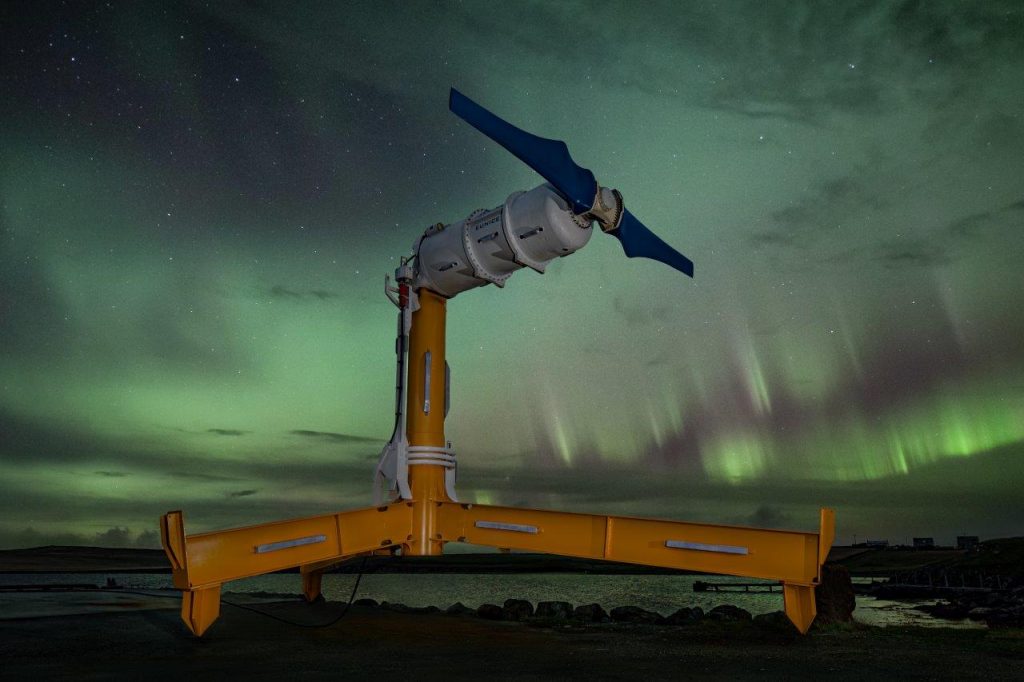Undersea turbines were trialled up here but failed ( due to poor quality steel and corrosion and lack of real commitment). It requires investment and effort but is achievable if politicians were serious.
Nuclear is about 17% of the UK’s energy mix. Tidal could replace about 10% of that.
=====
Underwater turbines tipped to provide 10% of UK energy
13 JAN, 2022
BY CATHERINE MOORE
Undersea turbines could generate a tenth of Britain’s power in the future, according to a government-backed sustainable energy research company.
Tidal stream energy uses turbines to extract energy from moving water in oceans and rivers, with UK waters holding around half of Europe's tidal stream resource.
Stephen Wyatt, director of of research and disruptive innovation at Offshore Renewable Energy Catapult (ORE) - which was established in 2013 by the government - said the 2020s could be a “golden decade” for the approach.
He told The Independent: “Tidal stream technologies are proven and on the cusp of commercialisation, with the most advanced being home-grown in the UK.
“One of the appealing aspects of tidal is its predicatability. We can forecast tides hundreds of years into the future, covering fluctuations from other power sources – you can’t predict when the sun is going to shine months in advance.
“10% is a significant number. In a world where we’re pushing for net zero, it can really move the dial in terms of UK energy demand.”
According to Wyatt, investment and subsidies could enable the technology to become cost-effective. It could create 26,600 jobs by 2040.
“Tidal energy is on track to be cheaper than both nuclear power and fossil fuels, providing clean and sustainable energy around the world,” he added.
“The UK has put significant funding into innovation and research and development, and a total of 80% of components are made in the UK. There is huge potential to create a lot of jobs in this emerging sector.”
In November it was announced that the UK government will invest £20M per year in tidal stream electricity as part of its flagship renewable energy auction scheme.
The money will be ringfenced for tidal projects each year as part of the fourth allocation round of the Contracts for Difference (CfD) Scheme.
This will give the marine energy sector a chance to develop its technology and lower its costs in a similar way to the UK’s world leading offshore wind industry.
Over time marine technologies have the potential to significantly contribute to decarbonisation commitments and could support hundreds of green jobs across the country, with projects currently in development in north west Scotland, North Wales and the south coast of England.
Tidal energy has the potential to be a very reliable source of generation, given the predictability of the tides. Including this in the UK’s low-carbon energy mix will make it easier to match supply with demand, building on the government’s commitment to build a strong, home-grown renewable energy sector to reduce the reliance on fossil fuels and exposure to volatile global gas prices.
In December, developers of a cost-cutting tidal energy innovation were given £800,000 to make their product commercially viable.
The funding was provided through the government’s Energy Entrepreneurs Fund, which is focussed on funding green energy technologies.
Nova Innovation’s Cost Reduction Acceleration in Tidal Energy (Create) project aims to slash the operation and maintenance costs of tidal energy in remote areas, accelerating the sector towards commercial reality.
Nova claim that its innovation could unlock 100GW of tidal energy resources worldwide
=====
Tidal stream energy uses turbines to extract energy from moving water in oceans and rivers, with UK waters holding around half of Europe's tidal stream

www.newcivilengineer.com


















